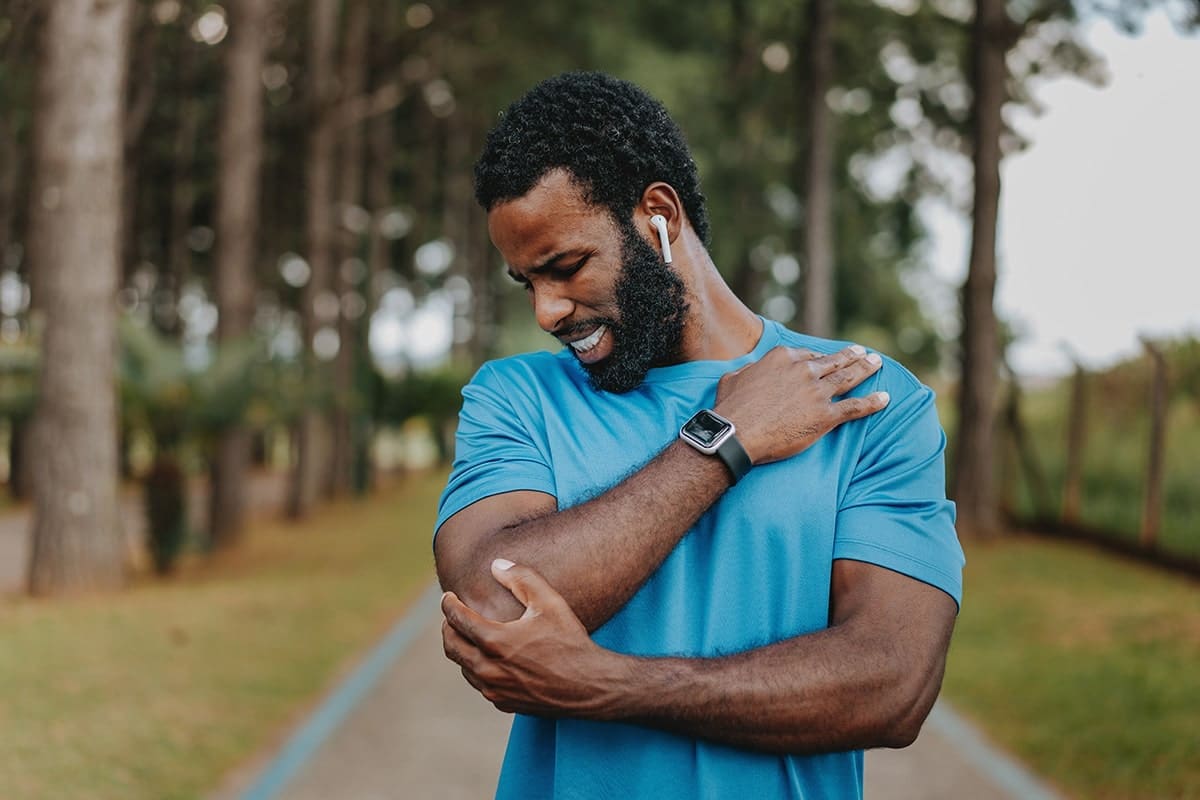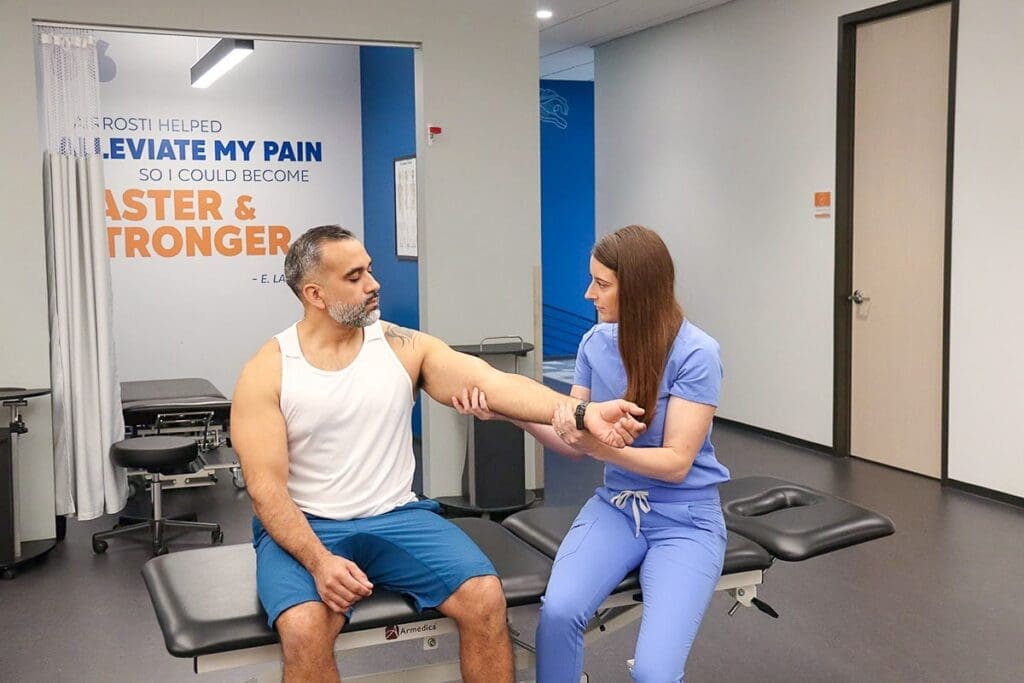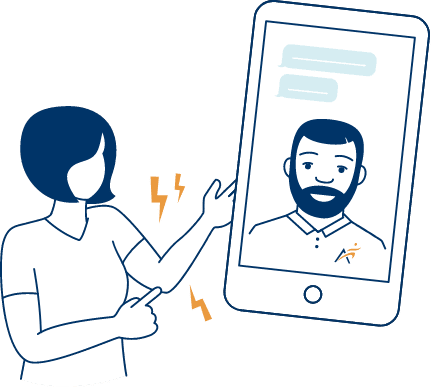- About
Who We Are
Partner With Airrosti
Testimonials
- Locations
Nationwide Care
Our virtual care option, Airrosti Remote Recovery is available nationwide.
Find A Location Nearest You
- Injuries We Treat
- No Cost Assessments
- Virtual Care
- Careers
Our virtual care option, Airrosti Remote Recovery is available nationwide.
(21,000+ reviews on Google across 150+ locations)

Have questions or would like to schedule over the phone? Call us at 844-719-5079
Find an Airrosti Clinic Near You (OH, TX, VA, WA)
We take the time needed for a thorough examination to find the underlying cause of your pain.
Airrosti Providers use hands-on manual therapy to treat tennis elbow symptoms to reduce pain, increase mobility, and accelerate healing.
No surgery, injections, or prescription medication.
Patients have shorter recovery time with an average of 3.2 visits over 2 weeks.
Speed your recovery and keep your pain from returning.

She discusses the symptoms associated with this common injury, as well as everyday treatment methods. She also explains how Airrosti’s approach to treating this injury allows patients to take control of their recovery plan.
Still have questions or concerns about your tennis elbow? Schedule a no-cost video chat with one of our Providers.
Tennis elbow is a common term for a condition known as lateral epicondylitis. It can be caused by overuse of arm, forearm, and hand muscles that results in outer elbow pain. While you don’t have to play tennis to get this injury, the term came into use because it can be a significant problem for some tennis players. Tennis elbow affects 1% to 3% of the population overall and as many as 50% of tennis players during their careers.
Tennis elbow is caused by either abrupt or subtle injury of the muscle and tendon area around the outside of the elbow. This injury specifically involves the area where the muscles and tendons of the forearm attach to the outside bony area (called the lateral epicondyle) of the elbow.
Tennis elbow is similar to another condition called golfer’s elbow, or medial epicondylitis. This condition affects the tendons on the inside of the elbow, instead of the outer.
This condition specifically involves the lateral epicondyle, the part of the elbow where the muscles and tendons attach to the outside bony part of the elbow.
The extensor carpi radialis brevis (ECRB) muscle helps stabilize the wrist when the elbow is straight. When the ECRB is weakened from overuse, small tears form in the tendon where it attaches to the lateral epicondyle. This can lead to inflammation and pain in the elbow joint.
Lateral epicondylitis is a common reason people see their doctors for elbow pain. While it is most common in people between 30 and 60, anyone can develop tennis elbow. It also tends to affect men more than women.
This condition often impacts tennis players, athletes in racquet sports, and people who participate in leisure or work activities that require repetitive arm, elbow, wrist, and hand movements. Examples include golfers, baseball players, bowlers, landscapers, carpenters, and mechanics.
The most common signs of tennis elbow include swelling and pain on the outside of the elbow. The pain is more likely to be present when gripping an object or with actions like opening a door or raising your hand above your head.
Other signs of lateral epicondylitis include:
• Weak grip strength
• A painful burning sensation on the outside of the elbow
• Pain that becomes more noticeable towards the end of the day
• Increased pain with repeated twisting motions or activities that strain the tendon
Usually, the pain is on the outside of the elbow and might be accompanied by warmth and swelling. The elbow may maintain its full range of motion, as the inner joint is not affected.

Surgery is not usually necessary for tennis elbow. Most cases can be effectively managed with conservative treatments such as rest, physical therapy, Airrosti care, medication, and lifestyle modifications. Surgery may be considered if conservative treatments fail to provide relief after several months, or if there is significant damage to the tendons that requires surgical intervention. It’s important to discuss all treatment options with a healthcare professional to determine the best course of action.
It’s generally safe to take medications for tennis elbow pain, but it’s important to use them as directed by your healthcare provider. Over-the-counter pain relievers such as ibuprofen or acetaminophen can help reduce inflammation and alleviate discomfort. Prescription medications such as stronger NSAIDs or corticosteroid injections may be recommended for more severe cases. It’s important to consult with a healthcare professional before starting any new medication regimen, especially if you have underlying health conditions or are taking other medications.
Yes, there are several self-care techniques and exercises that can help alleviate tennis elbow pain. These may include gentle stretching exercises to improve flexibility, strengthening exercises to support the forearm muscles, and specific exercises like wrist extensions and grip strengthening. Additionally, applying ice to the affected area, using a brace or strap to reduce strain on the elbow, and avoiding activities that exacerbate symptoms can help promote healing and prevent further injury.
While it’s important to avoid activities that worsen tennis elbow symptoms, completely restricting all activity may not be necessary. Modifying activities to reduce strain on the elbow and incorporating rest breaks can help alleviate symptoms. Low-impact activities such as swimming or using an elliptical machine can be beneficial for maintaining overall fitness without putting excessive strain on the elbow. However, if pain persists or worsens with activity, it’s important to consult with a healthcare professional for proper evaluation and guidance on activity modification.
I first saw Dr. Camp for, basically, tennis elbow, after my physician recommended Airrosti, since it's a soft-tissue injury. I didn't know what to expect, but he walked me through what would happen at each visit. He does a great job of asking questions and then also distracting me while he's helping solve for the injury. The exercises he recommended also helped resolve my pain quickly. Fast-forward a year later, I'm finally back at the gym post-pandemic, and my knee is killing me. Then my IT band is killing me. I came back to Dr. Camp because I knew he'd help me resolve the issues quickly. He taught me about what was going on, why things were hurting where they did, then went to work on breaking up the fascia around my knee and outside o...+ show moref my leg, which was not fun. However, he kept me distracted so I could manage the treatment -- he's a nice guy. When I actually took the time to faithfully do all the exercises, I saw really quick improvements. He explained how stretching and strengthening certain muscles help with the condition, and that understanding helped me prioritize the exercises and dramatically reduce my pain quickly. I love that Airrosti has videos of all the exercises, that Dr. Camp takes time to explain the pain (versus just treating it), and that I can do my part on my own time to recover even faster (or at least not hurt myself again). Everyone there has been very helpful, personable, and you can't beat the fast recovery times. I'm very glad I found Airrosti and Dr. Camp.
by Leigh Choate
We offer both in-clinic and telehealth appointments to best suit your needs.
Reviewed by Casey Crisp, Doctor of Chiropractic
Disclaimer: Always consult with your doctor before starting any exercise program. If you experience any numbness, tingling or reproduction of your symptoms, please contact your doctor.
